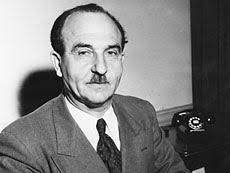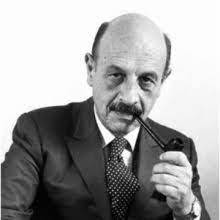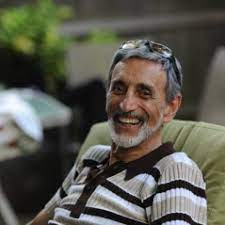Sometime in the late summer of (1963?), I learned that Tama Eshkol (the daughter of the new Israeli PM, Levi) would be coming to America to help sell Israeli bonds. Well, that got my attention, because “Tami” had been a “madricha” (a tour guide leader) for my group of foreign youths who spent an entire summer working and traveling around Israel in 1958, a program called Makhon Hakayetz; and we had become very good friends. So I immediately called the Israeli Consulate in New York City, explained that Tami had been our madricha when I spent that summer in Israel, and offered to pick her up at Idlewild Airport (now, JFK). Amazingly, they gave me all the necessary information and thanked me for taking the chore off their hands! (Fat chance of that happening these days, right?)
In those days, you could view the entire Customs process from the second floor through floor to ceiling glass panels; and when I recognized Tami, I ran downstairs, walked up to the Customs exit doors, turned completely around, and slowly backed through the two sets of doors that separated Customs from the airport lobby, as the throng of new arrivals rushed past in the opposite direction. Once inside, I made my way to where she was being "processed," and then drove her to a friend's home on Pennsylvania Avenue in Brooklyn. I also became her tour guide, picking her up one evening and taking her to my favorite club in the Village: Marie's Crisis.
* * * * *
When I spent almost 5 months in Israel the following year, she returned the favor, becoming my informal advisor, recommending that I trade some farm work at Neot Hakikar (a private moshav just below the Dead Sea) for a ticket on one of their great desert tours; also suggesting I volunteer for the high-profile archaeological dig that (retired) General Yigal Yadin was supervising at Masada. Well, it just so happened that a girl I was “dating” on Kibbutz Kfar Blum had been accepted for a 2-week stint at the dig, so I had yet another reason to go there. I thus began a series of mostly-unsuccessful telephone calls to Yadin’s office in Jerusalem. At the time, telephone service in Israel was primitive (at best); especially during the winter months, when lines were often “washed out,” or so I was told. Ultimately I did get through. I explained – to Yadin’s wife – that I wanted to get onto the dig ... and that my girl friend had been accepted. Given that the acceptance and (Military) screening process would take too long, she suggested that I simply go there directly, present myself, and take my chances.
Which is exactly what I did: I took the 4-hour bus trip from Kiryat Shemona to Tel Aviv’s “takhanat merkazit” (central bus terminal) another bus to Beersheba; and then embarked upon a series of hitches to the Eastern-most foot of that ancient fortress. Two memories stand out about the final 4 hours of that Friday evening trek: First, it was Friday, the start of the Sabbath, which explains why – over that entire 4-hour period – I could not have been passed by more than half a dozen cars (and picked up by just one). I mean, the road was absolutely empty! Which explains why most of the last 20 miles of my journey was traversed . . . on foot!
But most memorably I had the distinct sense that I had entered a space that seemed like some form of paradise: perfect weather; a totally silent, almost spiritual calm; the mildest of breezes (appropriately the Hebrew word “ruach” means both wind and spirit!) and just the slightest scent of blossoms – blossoms! – all around, even though no natural growth could possibly survive here, the lowest – and probably the driest – place on earth. Whatever was carrying me along this magical, truly sublime trip, I just took it all in!
By the time I got to my destination, it was probably 9:00 PM. At the very foot of the promontory, was what was described to me as a youth hostel. All I could make out upon entering its stone entryway was what looked like an outdoor restaurant. Nothing else; no one around. So I curled up on the heavy rucksack slung across my shoulders and fell asleep.
The following morning, I was awakened by the proprietor who, conveniently, had a military-type wind-up phone, which was linked to the main office of the dig, located on the Westernmost side of that mass of rock (an area butting up against “Silva’s Camp,” named after the Roman general who ultimately overcame gravity – with help from an army of Jewish slave labor – to “overwhelm” a population of what turned out to be 960 dead bodies).
Just a nod to history: after years taken to create the massive siege ramp that ultimately enabled Silva to roll up the battering rams that did the Zealots in, Silva’s army finally breached the stone outer wall of the fortress, causing the collapse of the wall’s earthen contents, and exposing the stone inner wall, thus assuring Silva’s army easy access whenever they decided to attack. Knowing their certain fate – if they survived the anticipated slaughter – all but one of the Zealots committed suicide. The sole survivor, according to legend: historian Flavius Josephus, who – he claims – was at Masada but was excluded from the mass suicide in order that an accurate history of the event be made.
OK, back to my odyssey; Winding up this odd-looking phone contraption, he put me on with a “Jonathan,” who introduced himself as Yadin’s aide-de-camp; and when I explained my purpose, he offered to meet me at the top of the snake path, that twisting mud-slick path that was – excepting for Silva’s siege ramp – the only way of scaling the wall and accessing the city built by Herod back in ancient times. Until it was rebuilt with steps and hand rails – probably in the 1980s – to accommodate tourists, this snake path had a romantic – and sometimes gory – history: Young men would scale it in order to write the names of their paramours on the wall’s sides, often slipping and falling to their deaths (!). Nowhere on the face of the earth was the phrase “Slippery when wet!” more relevant!
Well, I was in pretty good shape at the time ... and fortunately the path was bone dry ... so I slipped into my rucksack and literally scampered up that tortuous series of switchbacks that took me from 1,200 feet below sea level to several feet above. Reaching the plateau at the same time as Jonathan (who wasn’t carrying 20-plus pounds on his back) apparently impressed the red-headed South African. At any rate, he volunteered that someone had just left the “dig,” and would I want to take his place. Would I?
And that is how I managed to evade a pretty stiff military screening before General Yadin would allow anyone onto his precious dig site. But what did I know? Jonathan led me to that sole empty cot, and I began emptying my belongings into a little wooden cubby. It was only then that I learned that the source of that magical bouquet accompanying me on my long walk was in fact just a broken bottle of after-shave lotion! (Such a disappointment!)
For the next 8 or 9 days, I would awake at around 5:00 AM, grab something to eat, and head up the siege ramp to scrape, sweep, filter and separate ancient treasure from huge quantities of detritus at a Byzantine church, built apparently in the 5th Century. [I can understand why Herod built this fortress (a winter get-away? safety?); and I can understand why the Zealots occupied it (desperation!). But why would those early Christian monks want to live in such inhospitable – dare I say god-forsaken? – surroundings? Penance, perhaps?
Everyone got roughly 30 or 40 minutes for a very monastic lunch, so one fine day I got the bright idea of racing down the snake path and bringing back half a dozen bottles of beer. Which is exactly what I did, after hanging two rubbery pots around my neck. Hey, I had already run up the path carrying over 20 pounds in my rucksack, so half a dozen bottles of beer would be no problem. Until you figure that we had already been working in the blazing sun for 5 hours ... and the sun would be accompanying me on both legs of the sprint. Actually, the trip was a breeze: remember I was in good shape; and our cohort was the envy of the entire army of volunteers. Now that was something I’m sorry I never photographed!
One evening, returning to camp from work, as the 2-week segment I found myself part of was about to end, I walked over to the office to make sure my name had been added to the official volunteer list, in order to receive the souvenir medal they would be awarding to everyone (everyone else!). They took the information and told me they’d get back to me. And did they ever!
The following day, an announcement went out over the loud speaker that covered the entire top-side city as well as the Silva’s Camp area below. “Jules Zalon, please report to the office immediately!” When I got to the office, Yadin came out onto the front porch; he extended his left arm, pointing his index finger nowhere in particular, and loudly intoned: “You lied to my wife. Get out of here immediately!” I tried to tell him he was flatly wrong, but he would not listen to anything I had to say. Looking back on that experience, I wonder why I didn’t just seek out Jonathan. But I suppose that would have made no difference. Yadin was apparently embarrassed that (1) I had evaded a strict military screening process; and (2) his wife had actually encouraged my endeavor!
Throughout my stay there, I – like everyone else – had respected Yadin’s order that no photographs be taken by anyone. (Apparently to assure that he alone would have the only photos of the dig, many of which wound up in his soon-to-be-published book.) But having been treated so badly by him, I decided to take at least one photo proving that I had at least been on that historic dig. So I set my fancy Rollicord camera up on a 55-gallon drum, adjusted the distance and the lens speed, and quickly ran to get into the frame (wearing my rucksack, sunglasses and hat) before the lens clicked. I had set up the shot so that I would occupy the left side of the frame, with Masada (in the distance) taking up the right side. Unfortunately, “Rollie” screens show reverse images, so Masada wound up close to the left side of the photo, and the only part of me that made it out of the darkroom was my pinky! Very disappointing! (Actually there is one photo in Yadin’s book showing the back of someone working on the Mosaic floor at my church. I think it’s yours truly, but there’s really no way I can prove it. And why would I want to?)
My sister Alice, who at the time lived on Kibbutz Kfar Blum, ultimately relocated to Memphis, Tennessee; and when Yadin spoke at her temple several years later, she asked him about her brother and Yadin’s throwing him off the dig. Oh yes, he responded, he remembered the incident well. Whether he did or not is of no moment. Perhaps he was just trying to be nice.
But he sure wasn’t nice to me on that hot dusty day at Silva’s Camp!
Still, fond memories!
Jules Zalon, JHSNJ Member and former Patersonian |







